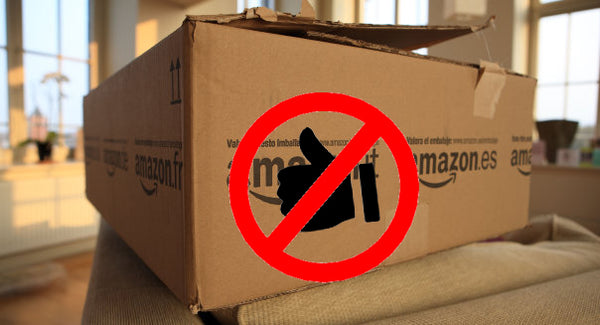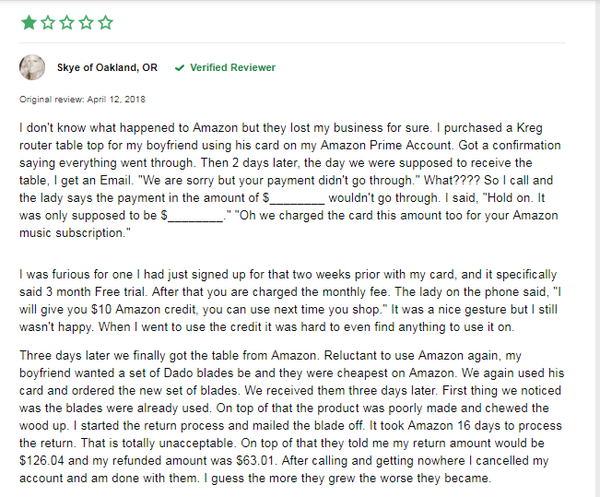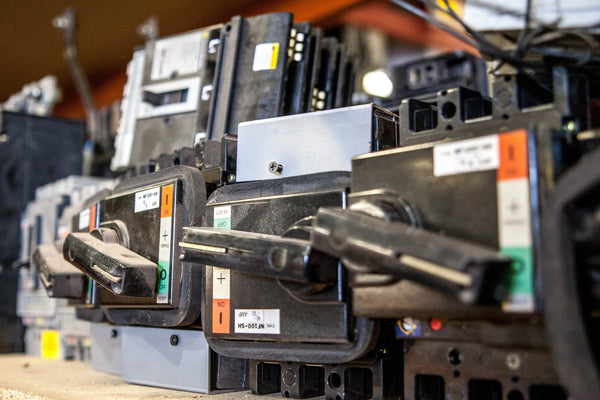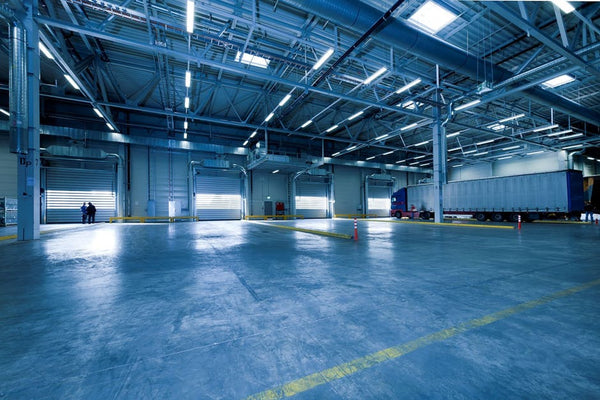
Often we order a product on online shopping sites like Amazon and end up returning it. Thanks to Amazon’s easy return policy, it’s a hassle-free process as someone comes to your doorstep to pick up the product.

We’re sure that several of you have wondered: “what exactly happens to these products once I return them to Amazon?”
There’s, unfortunately, no short answer to this. What Amazon does with customer returns depends on several parameters.
But before we get into that,
Let us look at some of the common reasons people have for returning their purchases to Amazon:
Didn’t like the delivered product

It happens more often than you would imagine: people order a product off the internet and then realize that the final delivered product doesn’t really look the same as what they found online.
Sometimes either the color doesn’t match. Or in many cases, the quality of the product is not the same as it looked from the images.
Sometimes, the description added by the seller might hype up the product far more than what it really is. In such cases, customers send the products back to Amazon.

Changed your mind

There’s a chance sometimes that a customer changes their mind between ordering a product and it gets delivered to their house.
In this interim period, the customer might just realize that they don’t need the product anymore.
Or there’s also a chance that they found the same product elsewhere at a cheaper price.
In such cases, these customers tend to return their purchases to Amazon almost immediately after delivery.
The product is damaged or defective

Amazon is very careful about the quality of its products. However, there's always a chance that the product you receive might be in a damaged condition due to some accident.
Also, after using a product for a few days, a customer might realize that there was some manufacturing defect with the product.
Thanks to Amazon’s 30-day return policy, such products can easily be returned by the customer for a full refund.
Ok, so what happens after I return an Amazon product?
Now, these are some of the common reasons for customers returning their purchases to Amazon.
Which brings us to the next (and most important question): what happens to these products after they are sent back to Amazon? Well, a lot of that depends on the circumstances of the returns and the condition of the product.
It goes back on sale

If the product is in mint condition and hasn’t been used by the customer, it goes back on the virtual shelf. This happens only in cases where the consumer hasn’t opened the original packing or gotten rid of the manufacturer tags.
In such cases, Amazon will put the product back on sale online as a part of its inventory and will sell it to the next customer who purchases it.
Returned to the manufacturer

This happens in cases where the product is completely defective or damaged. Of course, such products are of no use to the consumer or to Amazon and are shipped back to the manufacturer.
If the products have a minor defect or damage to them, the manufacturer will try to fix these and sell them at a discounted price.
However, if the product is completely damaged, then it will be salvaged for whatever spare parts it has and the remaining will be discarded by the manufacturer to the trash can for recycling.
Goes on sale as “refurbished”

Often, a returned product might have some deficiency but it could well possibly be a minor one. In such cases, these products are sent back to the manufacturer for “refurbishing” and are then sold on Amazon as refurbished products.
You’ll often find these products online on Amazon where the description talks about the product as being “Almost new”. That’s because the product has been fixed to the point where it is as good as new.
However, due to company policies and regulations, these products can't be sold as new, and therefore, can be bought at a heavy discount.
Products are liquidated

Now, one thing that is important to remember is that Amazon has limited space for storing its goods or inventory.
Therefore, when it puts a returned good back on sale or refurbishes it, Amazon has to be sure that the product can be sold off instantly.
In many cases, that's not always a possibility. Think of that winter jacket you ordered in February and then returned it. As the weather gets warmer, the demand for winter jackets goes down.
For Amazon, it is pointless to keep such products in storage for another year where they occupy expensive real estate. Moreover, there's a good chance that fashion trends might change within the year and Amazon does not wish to put its bets (and money) on keeping something in storage that it cant sell instantly.
This is where wholesale liquidation companies like Quicklotz come in. These companies purchase consumer returns from Amazon at a heavily discounted price for re-sell to other consumers.
The entire process is a win-win for both parties. For Amazon, wholesale liquidation companies allow it to sell off good quality products which it cannot sell. Therefore, this helps Amazon recover some of the money that was stuck in unsold inventory.
On the other hand, Amazon sells these products to the liquidation company for a discount. As a result, the liquidation companies are able to pass on these discounts to their consumers.
The best part about purchasing Amazon returns from wholesale liquidation companies is that these are high-quality original products with their original tags. As a consumer, you can purchase these goods by the lot, pallet, and truckload at a super heavy discount.
Many people have built their online selling businesses by purchasing inventory from wholesale liquidation companies.
Thanks to such companies, good quality goods don’t remain stuck in Amazon’s warehouses and can be freed up for small businesses and home sellers.
Everyone wins at the end
This is, basically, the story of what happens to a product once you return it on Amazon.
With the increasing popularity of wholesale liquidation companies, a lot of Amazon returns which would go back on sale at market price are now being sold to these companies at a heavy discount.
Moreover, there is a guarantee that these goods are of a high-quality since they aren’t damaged.As we discussed earlier, most of these still come with their original packing and tags.
And what a great idea: why should a product just go and rot in a warehouse just because a consumer didn’t like the color?
There are enough buyers who would love that product and wholesale liquidation companies just make it more affordable for them.
There has never been a better time than this to be an independent seller who purchases their inventory from wholesale liquidation companies.
That's because the products are awesome, the prices are incredibly cheap, and you stand to make some immense profits.


0 comments